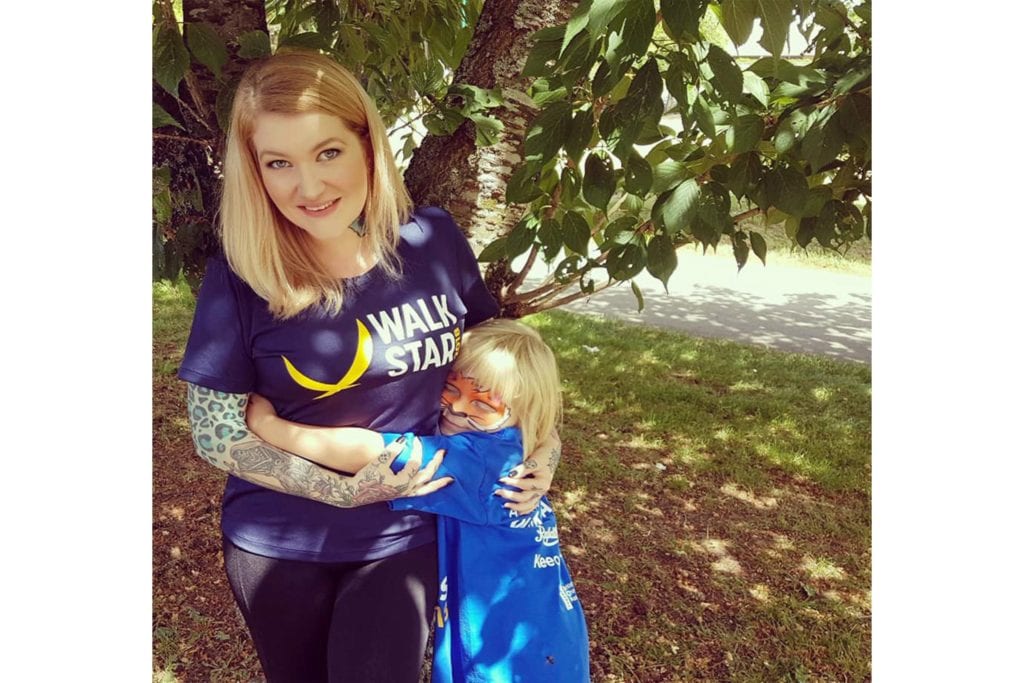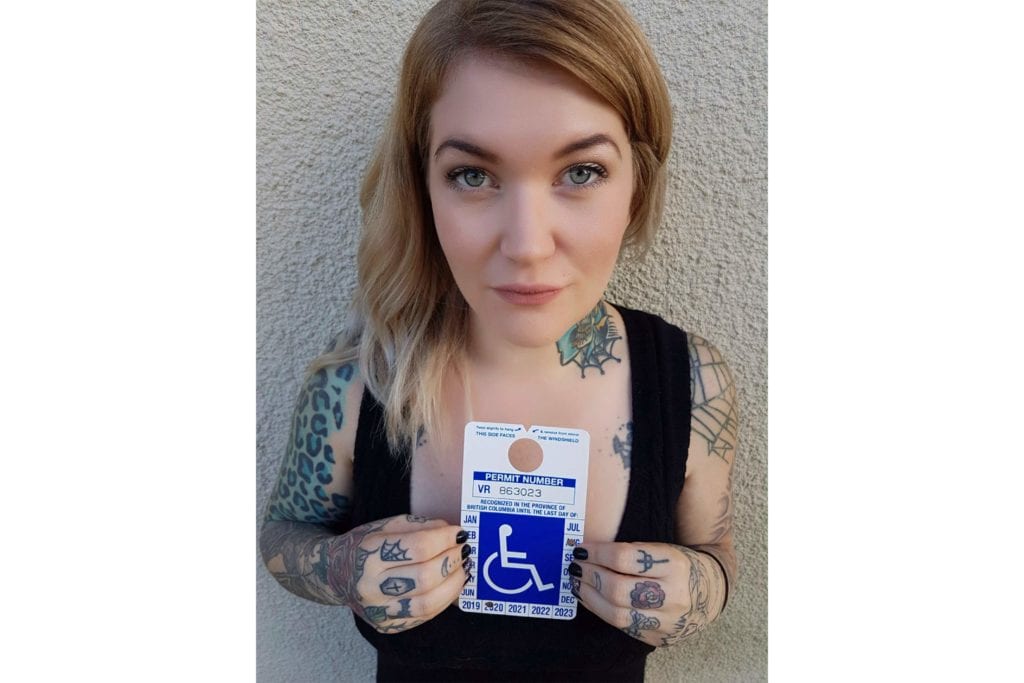

Imagine being diagnosed with a scary chronic illness you knew little about as a 29-year-old single mother of a 2-year-old boy.
Imagine being unable to work at your job because the pain and fatigue you experience on a daily basis makes things you could by rote feel impossible.
Imagine losing your connections to family and friends who don’t understand your “invisible” illness.
Eileen Davidson, 33, of British Columbia, Canada doesn’t have to imagine these things. Over the last decade, she lived through all of it.
But now, nearly four years after RA diagnosis, Eileen went from being frightened, in the dark, and intimidated by her disease to a prominent blogger — you can find her at ChronicEileen.com — and advocate for people living with chronic illness around the world. Here’s how she got there.
Dismissed by Doctors
Though Eileen had begun to notice pain in different areas in her twenties, it wasn’t until she became pregnant at age 26 with her son Jacob that she began to worry about what could be causing all these painful symptoms. Everyone has their share of pregnancy discomfort, but for Eileen, something felt different. She had pain in her feet, back, hands, jaw. “My doctor wrote it off as being due to my job as an aesthetician,” she says.
When she began to have a lot of swelling, her doctors suspected preeclampsia, but tests were never conclusive. Even though her aunt had rheumatoid arthritis (RA), Eileen says she never associated it with her own pregnancy swelling.
During her year of maternity leave, the pain in her hands and feet was getting worse. “My doctor said, ‘just wear a brace’ and you’ll be fine,” Eileen recalls. “I’d go back and tell him that I was still really uncomfortable and he would tell me to ‘just ice it; it’s probably carpal tunnel.’”
Adjusting to Motherhood with Chronic Pain
“I remember being really disappointed I couldn’t wear my baby,” Eileen says. She tried three different baby carriers and nothing felt comfortable. “There was this burning pain in my shoulders, my spine, my hips. I thought it was just because he was a really big baby.”
Buckling Jacob in and out of the car seat was impossible; someone else had to do it. “I found it so painful.”
Thankfully, Eileen could get away mostly with transporting Jacob by stroller, which was easier for her to get him in and out of. And using the stroller actually helped her feel better. “It was kind of like having a walker for support,” she says.
Eileen also struggled with intense postpartum depression. “I felt really irresponsible, angry, down with the world. The pain was making me question myself. It made it hard to take off the baby weight too,” she recalls.
The Shock of Returning to Work
In many ways, Eileen looked forward to going back to work as an aesthetician in a local salon and spa. “I was really good at being an aesthetician. I could do Brazilian waxes in minutes; I could get through a few clients an hour,” she says. Pedicures, facials, massages — she did it all.
“But hunching over and using my hands was getting more and more painful,” says Eileen. She toughed it out for a year and a half. She begged off giving massages and even switched jobs to try to get a more manageable workload.
Eileen knew she had to see a doctor and get to the bottom of what was happening. While she waited for an appointment with her family physician, she found herself in the salon’s back room crying every day from the pain.
One day, she was talking about her symptoms with a hairdresser colleague. “She told me I should ask my doctor to get tested for RA, and I thought, ‘Oh shit, my aunt has that.’ I never put two and two together until then.”
A Diagnosis — and Denial
Eileen’s doctor didn’t agree with her suspicion of RA. “’You’re too young, you don’t have enough swelling, it’s probably fibromyalgia,’’’ the doctor said. But I insisted. And the blood tests came back seropositive for RA,” Eileen says. (Here’s the difference between seropositive and seronegative rheumatoid arthritis.)
The rheumatologist confirmed the diagnosis and suggested that Eileen consider going on disability. “She also wanted to put me on a biologic, but I had a real hard time with that.”
Even though Eileen rationally knew she had RA, she still questioned the diagnosis for the first six months. “I thought, maybe I have lupus, maybe I have MS. The way my symptoms felt didn’t match up with just ‘joint pain and fatigue.’”
In fact, her two most troubling symptoms were fatigue and depression. “The fatigue was like not being able to move,” Eileen says. “It’s not just pain and stiffness but this overall body feeling. It was all day long. If I rested, it felt worse.”
And when you have depression and chronic illness, it’s a whole different level, Eileen says. “I didn’t understand that RA can cause depression. People would say ‘It’s just arthritis, why are you depressed?’”


Getting on Track with Treatment
Eileen’s treatment journey was the definition of trial and error. Methotrexate improved things a little; it allowed her to start going to the gym, which helped her emotionally as well as physically. “But the side effects were bad. I lost a lot of hair. I was constantly catching colds. Super dizzy. Nauseous, diarrhea, stomach pain.”
She started Plaquenil but had to stop right away because it was giving her suicidal thoughts and itchy skin. She developed GI bleeding from a prescription NSAID.
“The doctor always said I was a paradoxical patient. I would get the 1 percent side effect,” says Eileen. “It took about 18 different medications to get where I am now, including three different biologics. I’m very thankful, but it’s been very difficult to get to this point. There was a six-month gap where I didn’t go on any drugs. I gave up and lost hope. Then I read about what happens when you don’t treat RA. Even not treating it for a short period of time can cause damage.”
The Road to Advocacy
As Eileen started reading, researching, and learning more about her disease, she started blogging and connecting with arthritis groups in Canada. Part of what spurred her to help educate others was in response to how her own relationships were changing as a result of her diagnosis.
“When you’re not drinking or going out, you lose tons of friends,” Eileen says. “I’ve met so many new people as a patient advocate. They are my biggest support. They understand why other people aren’t there for me. They understand what I am going through.”
Many of her family members grew distant after Eileen’s diagnosis. “I come from a long line of cancer survivors, and they brushed off RA as not being serious. It’s part of learning who your support network is. When you’re in pain, people often look the other way.”
Eileen connected with the Arthritis Society, a national nonprofit, and did morning television appearances as well as other work as a patient ambassador. She joined Arthritis Research Canada’s patient advisory board. She started running a Facebook community for people with arthritis called Rheumatoid Arthritis Support (which works closely with the CreakyJoints’ Facebook community).
“I started to notice feedback from people, sharing my words with their family members to get them to understand what they’re going through. It inspires me to keep going.”
The Life Lessons RA Teaches
Eileen’s not one to wear rose-colored glasses when it comes to her patient journey. Living with RA has been HARD. “It wasn’t just about being unable to work, but a lot of other things you enjoy doing,” Eileen says. “RA has taken away my ability to dance. I used to love to dance. It’s taken away my ability to be the mom I want to be. Being the mom of a 6-year-old boy and the energy of RA do not match.”
But it’s hard to deny that RA has made Eileen who she is today. “The life lessons that chronic illness teaches you, you don’t get with a university degree. How to be kinder, compassionate, empathetic, healthier, and fight for what’s right,” she says.
“Patient advocacy brought me out of the pit that disability put me in — and it’s teaching my son too,” says Eileen, her voice filled with pride. “It’s been written on his report card that he has empathy and compassion for other children.”
When asked about her advice for other RA patients who are struggling, Eileen immediately points out the “three Ps,” a concept she learned through her arthritis advocacy.
The ‘3 Ps’ for Living with Chronic Illness
- Physical: The importance of gentle movement and activity. “If you don’t move it, you lose it,” Eileen says.
- Pharmacological: Not being scared of drugs. “Even though medication side effects can be bad, the disease is still worse,” she says. Keep trying to find the treatment plan that works for you.
- Psychological: Talking to a friend, counselor, social worker, and getting help for mental health issues. “Read up about how depression affects arthritis and don’t ignore the warning signs.”
If you want to become a patient advocate in the U.S., join our grassroots patient advocacy group, the 50-State Network. For materials that can help other people better understand what it’s like to live with arthritis, download our free patient guidelines.





